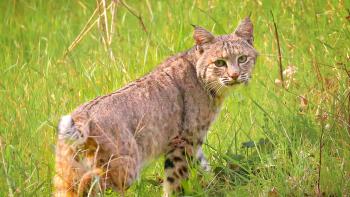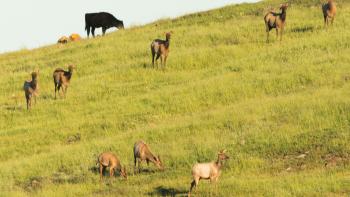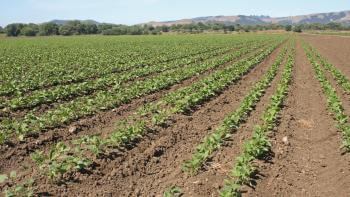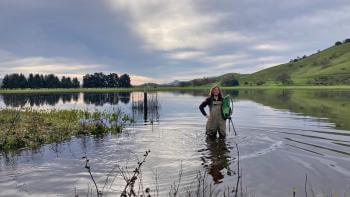Land Stewardship
Caring for Nature
Land protection is just the beginning of the story…
In addition to the Open Space Authority’s mission to conserve and protect open spaces in the Santa Clara Valley, we consistently work to restore and manage natural and working lands. Open Space Authority staff are responsible for caring for many natural resources, including plants and animals, water and soil resources and cultural and recreational assets.
The concept of land stewardship is far from a new one. Indigenous cultures have been actively caring for the land for tens of thousands of years. “Traditional Ecological Knowledge” (TEK) refers to the generations of Tribal knowledge, methods, values and practices that support humans’ relationship with the Earth.
By working closely with local governments, ranchers, farmers, landowners, local organizations and Tribal partners, the Open Space Authority helps protect and manage natural communities for everyone’s benefit. Together, we are transforming Santa Clara Valley’s open spaces into beautiful, healthy landscapes – places where humans and nature thrive together.
Our Approach
The Open Space Authority is focused on the most important values for fostering healthy natural and human communities. Based on findings from the Santa Clara Valley Greenprint and other scientific studies, we use the following management practices to care for the region’s most critical habitats, farmland and water resources.

Wildlife Connectivity in Coyote Valley
Habitat loss and land fragmentation puts many native animal species at risk. We work to restore a critical last-chance landscape in Coyote Valley that is important for not just local species, but which is an ecological chokepoint that supports much of the biodiversity in the surrounding 1.1 million acres of habitat in the Santa Cruz Mountains and Diablo Range.

Managing Rare Habitats like Serpentine Grasslands
The Open Space Authority manages rare habitats that contain much of the biodiversity in Santa Clara County. The Authority uses conservation grazing, integrated pest management, careful monitoring, and adaptive management to maintain rare habitats critical for many plant and animal species. The Authority works to create resilient landscapes for plant and animals to better adapt to climate change.
Restoring Watersheds to Provide Clean, Abundant Water
Our local watersheds have been drastically modified by human activities. The Authority works to restore streams, ponds, and wetlands that support rare wildlife, such as California red-legged frogs. This work also provides many ecosystem services for people, including flood water capture, groundwater recharge, and improved water quality.

Supporting Local, Climate-smart Agriculture
The Open Space Authority preserves local farmland because they are vital to our ecosystems, preserve rural character and open space, and provide local healthy food. We partner with organizations and farmers to promote climate-smart agriculture through actions like composting, creek restoration, irrigation improvements, and more to bring local healthy food into our communities.

Current Restoration and Stewardship Projects
Using our management practices, the Open Space Authority’s Natural Resources department carries out a wide variety of projects to monitor, steward and restore open space. Current projects include:
- Fuels Management Plan
- Blair Ranch Pond Habitat Enhancement
- Pajaro River Riparian Restoration Project
- Spreckels Wetland Enhancement Project
- Fisher Creek Riparian Habitat Restoration
- Llagas Creek and Pajaro River Confluence Restoration Project
- Monarch Restoration
- Fisher Creek Riparian Habitat Restoration Phase II
- Agricultural Strategic Plan
- Native Nursery
- Laguna Seca Habitat Improvements
Regional Conservation Investment Strategy
In November 2019, the California Department of Fish and Wildlife approved the Santa Clara County Regional Conservation Investment Strategy (SCCRCIS), the first such plan in California.
Developed by the Open Space Authority with a Steering Committee including representatives from The Nature Conservancy, Valley Transportation Authority, Valley Habitat Agency, State Coastal Conservancy, Conservation Strategy Group and others, the SCCRCIS promotes the conservation of sensitive species, habitats and other natural resources within Santa Clara County. The SCCRCIS includes goals and objectives for wildlife and habitat conservation, as well as actions and priorities which can guide investments in ecological resource conservation and potential opportunities for mitigation projects to offset impacts to species and other natural resources.
Help Us Heal Nature!
Volunteers play an essential role in the Open Space Authority’s land management and stewardship work. Our volunteer Land Stewards assist staff with habitat restoration, cleanup projects and removing invasive plants on open space lands. Learn more and sign up for an upcoming event!